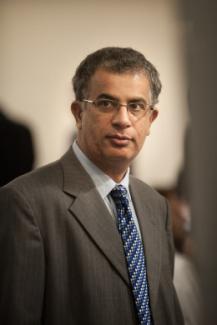Motivating bureaucrats: Autonomy vs performance pay for public procurement in Pakistan
- Pakistan faces growing spending needs and must meet them with limited resources. This is particularly the case for provincial governments who have devolved responsibility for service delivery. It is crucial that available resources are spent in a cost-effective manner.
- The project’s main goal was to ensure ‘better value for money’ by incentivising procuring officers and making procurement procedures more efficient.
- The project measured the impact of two major reform packages:
- Rewarding better performance through monetary incentives for drawing and disbursement officers;
- Changes to disbursement rules to give disbursing and drawing officers more autonomy.
- We found that these policies produced the best results when they were implemented together.
Addressing weak state capacity is a key priority for the international growth and development agenda. A central aspect of state capacity is the allocation of public goods, and ensuring the efficiency and effectiveness of public spending. The government spends a large part of its budget on procurement - purchasing goods and services from the private sector. Ensuring efficiency of public procurement is thus important for its direct benefits in ensuring the optimal utilisation of public goods. It is similarly important for ensuring effective government accountability.
Despite lip service to the concepts of efficiency and economy in procurement policy documents, the practice of public procurement has focused on procedural, legalistic aspects, prioritising compliance with formal rules rather than efficiency and value for money. This is partly because of difficulties in measuring the efficiency of public procurement. Without accurate measurement, it is hard to identify the source of inefficiency, and to design rules and provide incentives to promote efficiency.
This project was primarily aimed at measuring efficiency of procurement, understanding the causes of inefficiency in procurement, and designing and evaluating interventions that promote efficiency. It has made some progress towards these - the policy work has been done with the government in a mode of co-generation of innovative policy knowledge. Initial results suggest that a combination of greater autonomy and performance incentives for drawing and disbursement officers can improve the efficiency and effectiveness of public spending. The forthcoming academic paper will address the academic issues.
Full project description available on CERP’s website: http://cerp.org.pk/procurement-efficiency/





